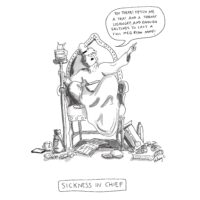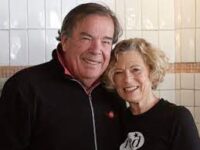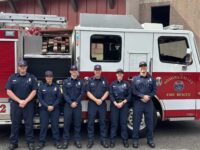Once upon a time in Sonoma, community healthcare actually worked. The functioning model was a locally owned, nonprofit, physician-oriented health maintenance organization called Health Plan of the Redwoods (HPR), and last Wednesday, Sonoma Valley Hospital strategists called on the memory of its success – and failure – to help forge a path out of their ongoing crisis.
A key problem expressed in the strategic planning meeting is the changing trend in the way physicians do business. Damon Doss, of Petaluma Health Care District, spoke from his experience. “We’ve lost some really good physicians to Kaiser because they wanted a different model than is available in Petaluma. In Petaluma, the largest practice other than the Petaluma Health Center practice is two docs.”
SVH Chief Financial Officer Jim McSweeney described the shift in figures. “Now [Kaiser] serves 27,000 out of the 50,000 Medicare beneficiaries in the county. That’s a $200-million-a-year market shifting away from Petaluma, from Sonoma, Memorial, Sutter and all the physicians – to Kaiser.” He said non-Kaiser providers – whether they want to acknowledge it or not – are actually “ad hoc systems in competition with Kaiser.”
To illustrate the consequence of the shift, he offered what SVH Chief Executive Officer Carl Gerlach called some “mind-numbing” statistics, which boiled down to the fact that had the contract remained in place, had HPR not gone bankrupt in 2002, the hospital would not be seeking a $35-million bond measure today. “Instead of getting $75 to $80 per member per month, we’d be getting $200 per member per month. We’d have an additional $22 million of revenue. So instead of a $40 million organization, we’d be a $60-million organization. We wouldn’t have needed the parcel tax.”
Shari Glago, network manager for Blue Shield of California, who had been CEO of HPR, recalled that what made that plan different was, first of all, the philosophy. “It was, ‘We’re your neighbors; we’re in this together.’” It was a health plan, she said, but with roots in the community. It operated only in five counties, not the whole state. “What made it unique,” said Glago, “is it was local, smaller, could move faster, and stuck to its values of being a good neighbor.” In its small area, she said, it had a large share of the market.
Strategic Planning Committee member Dr. J. Nevin Smith, who has practiced medicine in Sonoma for 41 years, recalled that what differentiated HPR from other insurance companies was that they had banded together to combat Kaiser and had to stick together and “be reasonable” with each other and cooperate. “There was no other medical group or hospital in the five counties that had the relationship that we had – the hospital and doctors,” he said. “And without that, you’re dead in the water.”
The question before the Strategic Planning Committee – both at the start and end of the meeting – was this: can the hospital learn from the HPR experience – what worked, what didn’t – and apply that to a new model? Can they mobilize the joint powers agreement (JPA) between the Sonoma Health Care District, the Palm Drive Hospital District, the North Sonoma County Hospital District and the Mendocino Coast District Hospital – which is showing positive signs, according to SVH board chair, Dick Kirk – and make the change that’s needed for a viable future?
To Smith, the problem is obvious. “You’ve got 20 docs in this town – we’re not cooperating with the hospital like we used to. If you can’t get all these people together and say we’re going to work together and make the right kind of decisions, health care-wise, it isn’t going to work. This is a monumental task, and I don’t know how you can pull it together, but if you don’t, what we all oughta do is all go join Kaiser or Sutter. Maybe that’s OK. I don’t know.”
Gerlach, drawing on his martial arts practice, said, with confidence, “If you’re not strong, you don’t do either.” You “lengthen your own line,” as they say in Aikido. “That’s what we need to do.” Build strength. Use the sense of urgency. “People are starting to get it,” he said. “We have a sense of what worked.” Some committee members said other groups did not feel it was possible, just didn’t have the vision, but Gerlach was not fazed. “I think our enthusiasm in Sonoma is coming from the fact that we had something that worked. Why can’t we do it again?”
Hospital planners look to the past to move forward
More from What's HappeningMore posts in What's Happening »




